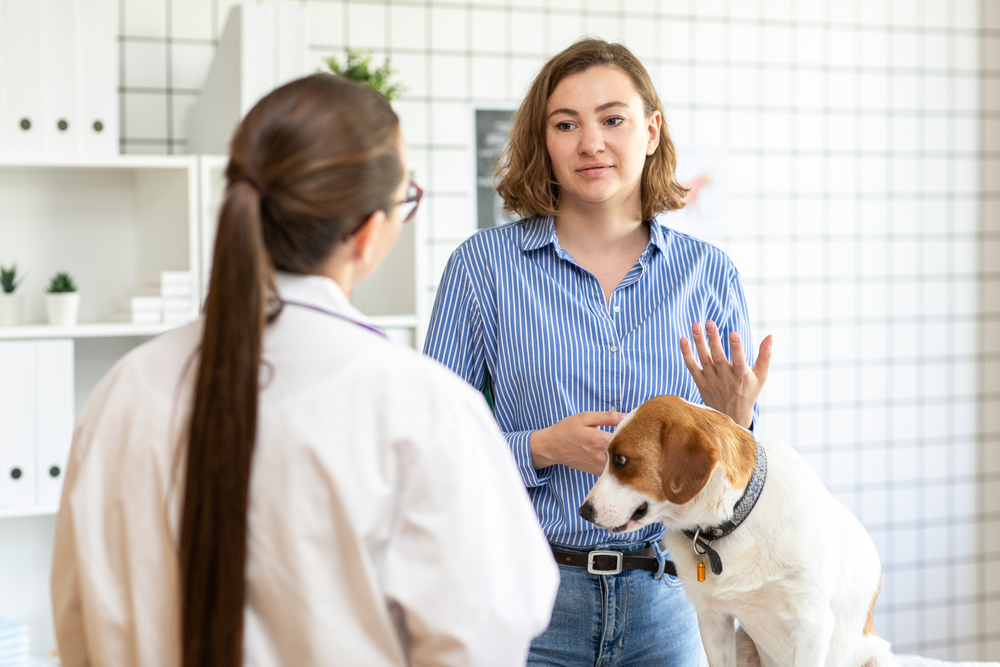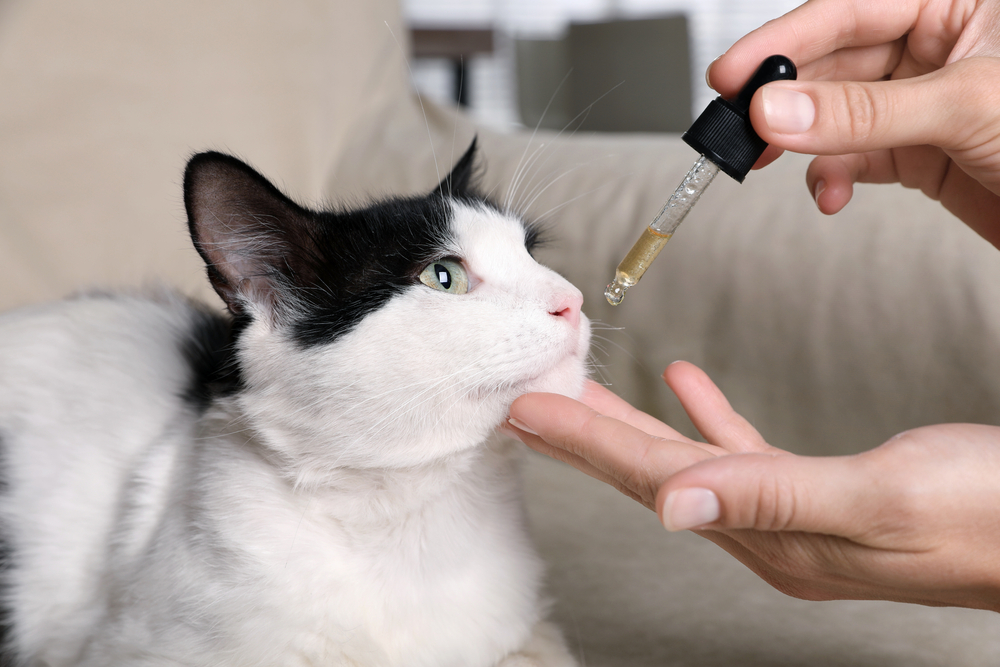Administering medication to pets can often be challenging for pet owners. Pets, like children, can be uncooperative during medicine administration. However, these prescriptions are necessary for managing chronic health conditions and preventing disease. With the proper techniques and patience, you can help the process go smoother and be less stressful for you and your furry friend. Our Emerald Animal Hospital team provides 10 expert tips to help you successfully medicate your pet.
Pro tip 1: Use pill pockets or treats to disguise pet medication
One of the easiest ways to give your pet a pill is to hide it in a treat or a pill pocket. Treats effectively mask medications’ flavor and smell, making them more appealing to your pet. Choose a treat your pet loves, and ensure it is large enough to conceal the pill within. You can also use the following pet-safe human foods to disguise pills:
- Xylitol-free peanut butter
- Sliced cheese
- Deli meat
- Tuna
- Mashed sweet potato
- Pumpkin puree
Pro tip 2: Crush the medication and put it in your pet’s food
Check with our Emerald Animal Hospital team to determine whether the medication can be safely crushed. If so, mix it with a small amount of your pet’s favorite wet food or a tasty liquid such as tuna water or low-sodium broth. Ensure that your pet consumes the entire portion to get the total dose. Some pets may be more willing to take their medication if it is disguised as their everyday meal.
Pro tip 3: Use a syringe for liquid pet medications
For liquid medications, use the syringe or dropper provided by our veterinarian. To administer, gently hold your pet’s head and insert the dropper into the side of their mouth, aiming for the back of the throat. Slowly release the medication, allowing your pet to swallow naturally. Be patient and take breaks if necessary to avoid overwhelming your pet.
Pro tip 4: Use a pet pill dispenser
Pill dispensers, also known as pill guns, can be helpful for administering pills to pets, especially for those who are resistant or have a tendency to bite when you are trying to get the pill in their mouth. These devices allow you to place the pill at the back of, but not inside, your pet’s throat without putting your fingers in their mouth. Follow the instructions provided with the dispenser and reward your pet after you successfully administer their pill.
Pro tip 5: Create a calm environment for your pet
Before medicating your pet, choose a calm, quiet place, free of distractions. A noisy area or a room with distractions can increase anxiety and stress in your pet and can make the process more difficult. Speaking to your pet soothingly, offering small treats, and taking a few deep breaths can also help you remain calm and composed.
Pro tip 6: Use positive reinforcement with your pet
Use positive reinforcement to help your pet make a good association with medication time. Offer praise, petting, and treats immediately after administering the medication. Over time, your four-legged friend will learn to associate the process with positive experiences, making future administrations easier.
Pro tip 7: Use the towel-wrapping technique for pets
For pets who tend to squirm or resist while having meds administered, gently wrapping them in a towel can help. This technique, often called a “kitty burrito” for cats, keeps the pet secure and helps prevent movement, allowing you to administer the medication more efficiently. Be gentle and ensure that your pet can breathe comfortably.
Pro tip 8: Stay consistent with pet medication timing
Consistency is key when medicating your pet. Administer the medication at the same time and in the exact location daily to establish a routine. Pets are creatures of habit, and a consistent medication schedule can make the process more predictable and less stressful for them.
Pro tip 9: Be patient and persistent with your pet
Patience and persistence are indispensable when medicating your pet. Some cats and dogs may take time to adjust to the process, and setbacks are normal. Stay calm, be gentle, and maintain a positive attitude. Over time, and with plenty of treats as rewards, your pet will become accustomed to taking their medication.
Pro tip 10: Consult our veterinary team

If you have difficulty medicating your furry pal, consult our veterinarian. Our team can provide additional tips, demonstrate techniques, or suggest alternative medication formulations, such as flavored compounds, transdermal gels, or injectables, that might be easier to administer yet ensure your pet gets the necessary treatment.
By following our pro tips and maintaining a calm, positive approach, you can successfully medicate your pet while minimizing stress and ensuring their health and well-being. Contact our Emerald Animal Hospital team so we can provide support and advice tailored to your pet’s specific needs.









Leave A Comment